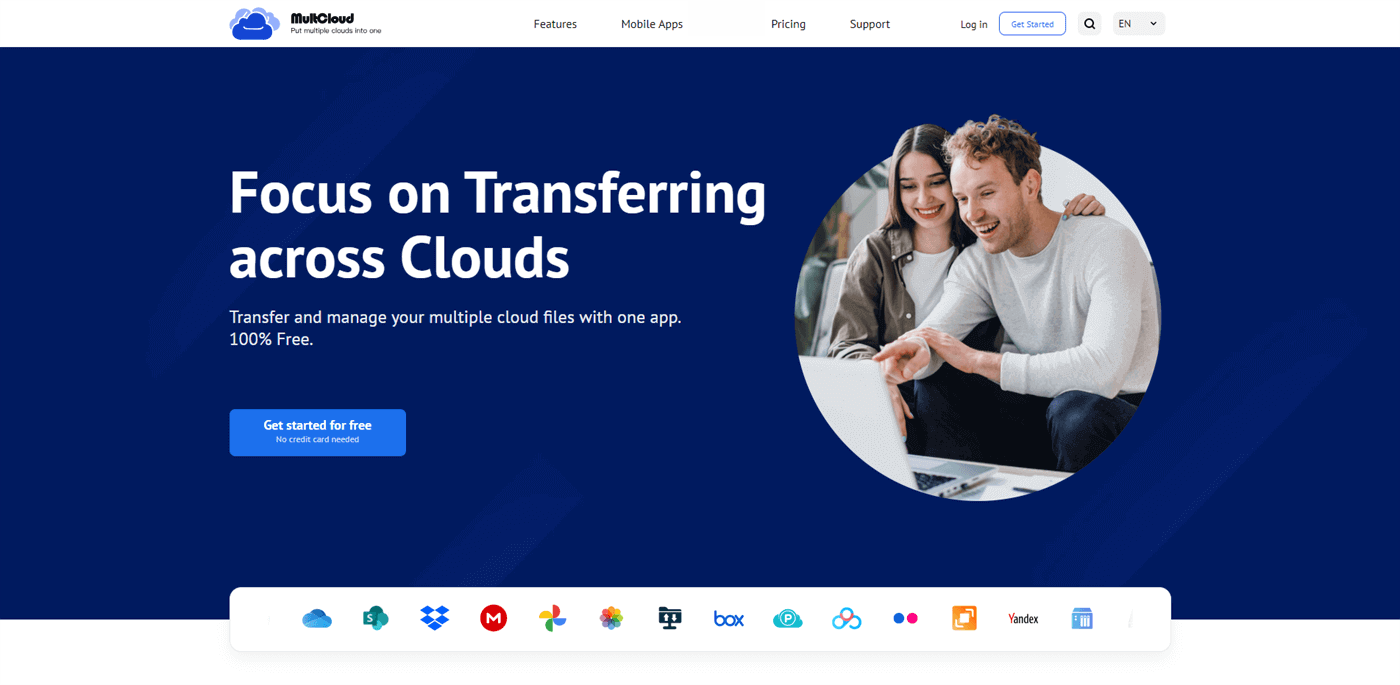Quick Search:
Why Migrate Outlook Emails to Another Account?
Over time, your email account accumulates a treasure trove of information, including work-related emails, personal conversations, and important attachments. When you need to transition to a new email account, you don't want to lose this valuable data. That's where email migration comes in.
Also, the process of transferring Outlook emails to another account serves the valuable purpose of creating a backup. This backup ensures that you have a reliable and efficient means to swiftly restore any essential emails whenever the need arises. This not only guarantees the security of your valuable correspondence but also provides peace of mind, knowing your important data is readily retrievable.
How to Migrate Outlook Emails to Another Account Easily
If you have a great many emails on Outlook and want to migrate them to another account, you can take advantage of a smart and practical cloud transfer service – MultCloud. It is a reliable platform that supports more than 30 cloud drives and popular email services, including Outlook, Gmail, Google Drive, iCloud Drive, iCloud Photos, Google Photos, Dropbox, OneDrive, Amazon S3, MEGA, etc.
This service allows you to perform many operations, such as sharing a Google Drive folder, deleting a document on Dropbox, downloading files from OneDrive, uploading photos to iCloud Photos, and so on. Also, you are able to export Gmail emails to PDF files and migrate emails and attachments to another cloud account directly and seamlessly.
So, how do I transfer all my emails to another email account via MultCloud? Follow the steps below:
Step 1: Register a MultCloud account on the web. Alternatively, you can sign in directly with your Facebook/Google account.
Step 2: Now, go to Add Email on the left navigation bar. Then tap the icon of Outlook to add your account. Next, follow the on-screen tips to give MultCloud permission.
Then, go to Add Cloud, tap the icon of OneDrive to add your account. Then give MultCloud permission by following the on-screen tips.
Step 3: Head to Email Migration, multi-select the emails you want to migrate in the first box, and choose OneDrive as the target directory. Finally, you can Migrate Now.
MultCloud will begin the migration process, copying emails from your source account to the target account. Depending on the volume of emails, this may take some time. There are many conveniences you can enjoy:
- An Industry-Leading Migration Speed. MultCloud boasts industry-leading transfer speeds, enabling swift movement of large files.
- Transfer Emails in the Background. MultCloud utilizes data traffic during email migration to another account, ensuring that the task remains unaffected even if your connection experiences disruptions.
- Scheduled Migration at Regular Intervals. MultCloud enables you to establish automated tasks, such as scheduled moves on a daily, weekly, or monthly basis.
So, you will find it easy to migrate emails to Google Workspace as well. On the other hand, you are also allowed to transfer, sync, and back up files from one cloud to another without downloading and uploading. It provides you with a simple and direct way to make data migration between cloud drives.
How to Migrate Outlook Emails to Another Account Normally
While MultCloud undoubtedly provides a high level of convenience by simplifying the process of migrating your Outlook emails, it's important to note that there exist alternative methods that can also be employed for this purpose. Here, I will elaborate on two additional approaches that you can consider exploring:
Method 1: Manual Email Forwarding
You can use the traditional manual way to move your Outlook emails. To deliver goal, you can follow the instructions below:
Step 1: Log in to your old Outlook account.
Step 2: Create a new folder in your target account.
Step 3: Manually select and forward each email from the old account to the new one.
Step 4: Organize the emails in the new account according to your preferences.
Method 2: Export and Import
Or, you can utilize another manual solution, following guides below:
Step 1: In your old Outlook account, export your emails to a .pst file.
Step 2: Log in to your new Outlook account.
Step 3: Import the .pst file into your new account, following Outlook's import wizard.
While these methods require more manual effort, they can be effective for those who prefer more control over the migration process.
Conclusion
After learning how to migrate Outlook emails to another account, you can have a try now. If you use tools like MultCloud, it becomes a manageable process. Remember to back up your data, choose the method that suits you best, and verify the migration's success. With these steps, you can ensure a seamless transition to your new email account while retaining all your valuable correspondence.
Q1: Is MultCloud a free service?
Q2: How long does the email migration process with MultCloud usually take?
Q3: Can I use MultCloud for email services other than Outlook?
Q4: Are there any risks of data loss during email migration?
Q5: Do I need technical expertise to use MultCloud for email migration?
MultCloud Supports Clouds
-
Google Drive
-
Google Workspace
-
OneDrive
-
OneDrive for Business
-
SharePoint
-
Dropbox
-
Dropbox Business
-
MEGA
-
Google Photos
-
iCloud Photos
-
FTP
-
box
-
box for Business
-
pCloud
-
Baidu
-
Flickr
-
HiDrive
-
Yandex
-
NAS
-
WebDAV
-
MediaFire
-
iCloud Drive
-
WEB.DE
-
Evernote
-
Amazon S3
-
Wasabi
-
ownCloud
-
MySQL
-
Egnyte
-
Putio
-
ADrive
-
SugarSync
-
Backblaze
-
CloudMe
-
MyDrive
-
Cubby




